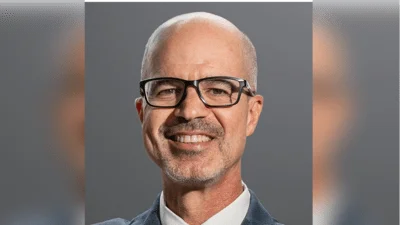The Congressional Record is a unique source of public documentation. It started in 1873, documenting nearly all the major and minor policies being discussed and debated.
“COMMERCIAL SPENT FUEL STORAGE” mentioning the U.S. Dept. of Energy was published in the Senate section on pages S7491-S7492 on May 25, 1995.
The publication is reproduced in full below:
COMMERCIAL SPENT FUEL STORAGE
Mr. MURKOWSKI. Mr. President, dangerous nuclear leftovers from the cold war and the commercial spent fuel storage problem present the U.S. with two major environmental challenges. An explosion at the liquid high-level waste storage tanks at Hanford could result in a catastrophic nuclear accident, and electric utilities are running out of space for storage at commercial nuclear reactors. Although these are separate problems, the solutions are related. Unfortunately, President Clinton is AWOL (absent without leadership), and the DOE is playing legal games instead of taking responsibility for taking the commercial spent fuel by 1998. It's time for a comprehensive solution.
First, let's review the facts:
Thirty thousand tons of spent nuclear fuel is being temporarily stored at powerplants at 75 sites.
In less than 3 years, 23 reactors will run out of space in their spent fuel storage pools.
By 2010, a total of 78 reactors will have run out of space.
We've already spent 12 years and $4.2 billion to find permanent high-
level repository and conduct site characterization at Yucca Mountain.
DOE will decide if Yucca Mountain is a suitable site for a permanent repository in 1998. If it is, DOE will file for license in 2001. DOE has told us that the odds of the site being suitable are about 80 percent. However, DOE has also indicated that the odds of getting a license for a permanent repository under our existing laws are about 50-50, and probably much worse. These odds are not good enough to bet the taxpayer's money on.
Still, the fact remains that, if after 3 to 6 years more work at Yucca Mountain, and a total expenditure of at least $9 billion on our nuclear waste disposal program, Yucca is either found not to be suitable or licensable, we have nowhere to turn. We currently have no contingency plan for waste storage. We will simply have to start over.
Meanwhile, the President and DOE are dragging their feet. DOE has recently issued a ``Final Interpretation of Nuclear Waste Acceptance Issues,'' reaffirming its earlier position that its contracts with the utilities to take waste by 1998 are not enforceable in court. DOE has also asserted that it has no authority under existing law to site an interim repository. DOE has missed the point. While DOE is focusing on legal technicalities to avoid its obligations to the American people, we have had no suggestions from DOE regarding solutions to this problem.
Although we have been told that DOE is studying the issue, all we have heard from the administration is a refusal to support any pending legislation at this time. I have received no response to my letter to the President requesting that the administration engage on this issue in a meaningful way.
Finally, the State of Nevada and the Nevada congressional delegation remain opposed to the location of any nuclear waste facilities in their State.
It is time to take a comprehensive look at the problem based on two basic principles: First, the Government must meet its obligation to take spent fuel by 1998 or as soon thereafter as practical. The ratepayers have paid for it. They deserve performance, not excuses. Even if it is found to be suitable, Yucca Mountain will not be ready before 2010. Therefore, interim storage of spent fuel is needed. Although there is nothing unsafe about the storage of spent fuel at reactor sites, for reasons of both economics and safety, we must consolidate our 74 spent fuel storage sites into 1 or 2.
Second, the U.S. must continue efforts toward a permanent geological repository. While we can keep alternatives such as deep seabed disposal and transmutation alive (if Yucca is found unsuitable), our long-term goal remains geologic disposal.
This raises a more difficult question: Where do we locate central interim storage? I would suggest the best location for an interim storage facility would meet the following criteria:
Spent fuel should already be there.
There should be adequate land area.
The Federal Government should already own the land.
There should be transportation infrastructure.
There should be a security infrastructure.
A skilled work force familiar with handling nuclear materials should be available.
A nuclear safety/worker protection infrastructure should be in place.
The location(s) should be in general proximity to the Nation's reactors, i.e., one for the East and one for the West.
The new economic activity associated with spent fuel management may address concurrent job losses.
After all of these considerations are evaluated, the relative costs of the alternatives should be taken into account.
Locations that meet the above criteria include some of our existing DOE weapons facilities. Geographically, the most likely candidates are Hanford and Savannah River. There are other important factors about Hanford, and Savannah River--each contain nuclear materials dramatically more dangerous than spent commercial fuel safety contained in dry casks. For example, Hanford has 61 million gallons of liquid high level wastes in 177 underground tanks--some of which have leaked or are leaking. Under certain conditions, one or more of these tanks could explode, resulting in a catastrophic nuclear accident. Also at Hanford are 4,300 metric tons of plutonium in various forms and locations, contaminated reprocessing facilities, corroding and possibly dangerous DOE nuclear fuels, and a contaminated plutonium finishing plant just to name a few. Savannah River has five closed reactors, two contaminated reprocessing facilities, and a variety of liquid and solid radioactive wastes.
Despite the very real environmental health and safety risks that exist at Hanford and Savannah River, fiscal pressures are forcing us to cut the overall cleanup budget even as we squander millions of dollars cleaning up low risk sites to comply with environmental regulations designed for a perfect world. As Ivan Selin, Chairman of the NRC, said last week, Prioritization of the cleanup at DOE sites, based on an assessment of risk to the public and the cleanup workers, isn't happening to the extent it should.
Finally, Hanford and Savannah River already have spent nuclear fuel. Not the safe, stable nuclear fuel found in commercial power reactors--
but military fuel designed to be quickly reprocessed to make plutonium. When we abruptly shut down plutonium production, this military fuel was left in limbo. Today it sits, corroding, in pools at Hanford and Savannah River . . . 206 metric tons at Savannah River, and 2132 metric tons at Hanford.
To review the situation, we need one or two centralized, dry cask storage sites for spent commercial nuclear fuel, until Yucca Mountain or another permanent geologic repository is ready. We have spent military fuel at Hanford and Savannah River--along with a host of other environmental problems--that demand attention despite declining dollars and misplaced priorities dictated by current environmental statutes. Employment at Hanford and Savannah River is dropping. The local communities are feeling the economic pinch. the activity at Hanford and Savannah River is shifting from defense production to environmental restoration.
Hanford and Savannah River meet all the criteria listed earlier:
Spent fuel is already there.
There is adequate land area.
The Federal Government already owns the land.
There is transportation infrastructure.
There is security infrastructure.
There is an available, skilled work force that knows how to handle nuclear materials.
There is a nuclear safety/worker protection infrastructure in place.
Savannah River is conveniently located with respect to civilian power reactors in the east, and Hanford is convenient to reactors in the west.
The new economic activity associated with spent fuel management will help address economic declines in the area.
The new dry cask storage facilities may even help safely contain the more dangerous spent military fuel that exists at both sites. [[Page S7492]]
Overall costs of transportation and storage would appear to be lower at these sites.
Therefore, I believe Hanford and Savannah River offer excellent sites for the temporary, dry cask storage of civilian spent nuclear fuel until a permanent geologic repository is available. At this point, I would like to make clear my support for continued progress toward a permanent geologic repository. Hanford and Savannah River already have defense nuclear waste and spent nuclear fuel from defense and research activities that is destined for the permanent geologic repository. This proposal is intended to hasten the day that those wastes, as well as the civilian spent fuel, are sent away from the sites for permanent disposal. I realize that at this time, nobody wants to store nuclear waste. Incentives must be offered. The communities near Hanford and Savannah River will understandably ask, what's in it for us?
I would be prepared to pursue benefits for these communities if they are inclined to take spent commercial fuel on an interim basis only. First, I am working with several of my colleagues to develop legislation that will prioritize DOE cleanups in accordance with actual risks. That approach will result in Hanford and Savannah River being cleaned up faster, since many of the high-risk problems are located there. Second, I am encouraging the privatization of efforts to vitrify--or turn into glass--high-level liquid wastes at Hanford. This is the best way to stabilize the liquid tanks and make them safe.
Third, we are offering new construction and economic activity associated with the construction and operation of an interim, above ground, dry cask storage site. This will help address the job losses and economic declines associated with the end of defense-related activities at Hanford and Savannah River. Fourth, there are other arrangements, including financial incentives, that can be considered. Whether or not DOE continues to exist as a Cabinet-level agency, its functions and operations will be significantly scaled back. As the various DOE sites compete for the remaining missions, special consideration could be given to a site that hosts the interim storage facility. Other benefits to communities agreeing to host an interim storage site can also be discussed.
Finally, to provide assurances to the local communities of Richland/
Pasco/Kennewick, WA; Aiken, SC; and Augusta, GA, that the interim dry cask storage sites are not intended to be permanent, work on Yucca Mountain will be continued. Remember, there is already spent nuclear fuel at these sites that is destined for a permanent geologic repository, when one is available. It is in the long-term interest of these facilities to participate in a program that will take care of the immediate problem so that the work on the permanent repository can go forward.
In addition to selecting a site, there are four elements that we should include in a legislative bill dealing with spent nuclear fuel. First, in order to construct a central interim storage facility in a timely manner, changes must be made in the Nuclear Waste Policy Act. These amendments should provide: that licensing of an interim storage facility can begin immediately; that the interim dry cask storage site can be constructed incrementally and that waste acceptance can begin as sections are completed; that the NRC will be the sole licensing authority; short-term renewable licenses to ease NRC rulemaking; and that DOE will be treated like a private licensee.
Second, to help ensure that the spent fuel can be moved from reactor sites to interim storage as soon as possible, a transportation system must be developed. Legislative changes would provide: that utilities are responsible for obtaining casks; that DOE will take title to fuel at reactor site; that DOE will be responsible for delivery; and a clear regulatory regime related to the transportation of spent fuel.
Third, to ensure that Yucca can be licensed, we should streamline licensing provisions, specifying repository performance standards.
Finally, fourth, a budgetary framework must be established that ensures that the money put into the Nuclear Waste Fund by the ratepayers is available to the program in amounts sufficient to achieve the first three goals in a timely and efficient way.
These draft proposals outline a workable and efficient interim storage program that would allow us to pursue the investigation of our permanent disposal options, including a full study of the Yucca Mountain site. However, one lesson we have learned is that we cannot put all of our eggs in one basket. We cannot solve every nuclear waste and spent fuel issue before this country in this Congress. However, we can set up the beginnings of a workable, integrated nuclear waste management system that will allow succeeding generations to apply new technologies to these problems.
In conclusion, I have given a basic outline of principles Congress must address if we are to solve these two major environmental problems. As chairman of the Committee on Energy and Natural Resources, I pledge to continue our goal of reaching a common sense and comprehensive solution. We'd like to do that with the help of President Clinton and his Department of Energy. So far, I have not seen sufficient indication they really want to be a part of any solution. Unfortunately, this issue is not one where America can be without leadership. I will look forward to working with all of those who have an interest and concerns to resolve what is undoubtedly one of America's most frightening problems, the management of waste left at DOE defense weapons facilities, while providing a legislative framework for DOE to meet its obligation to take possession of the Nation's civilian spent nuclear fuel.
____________________








